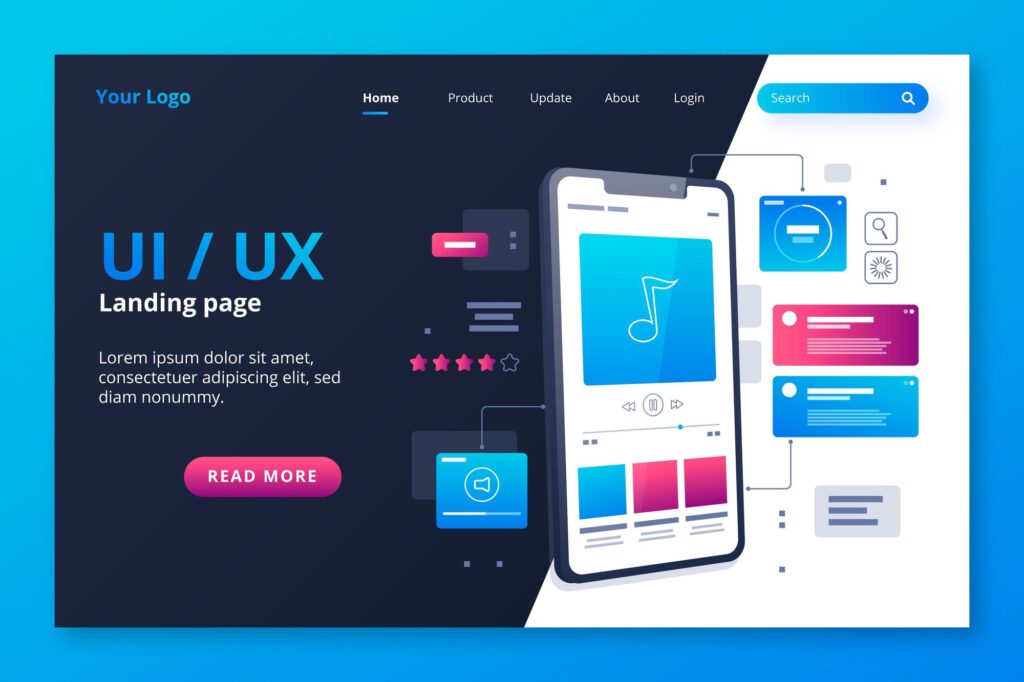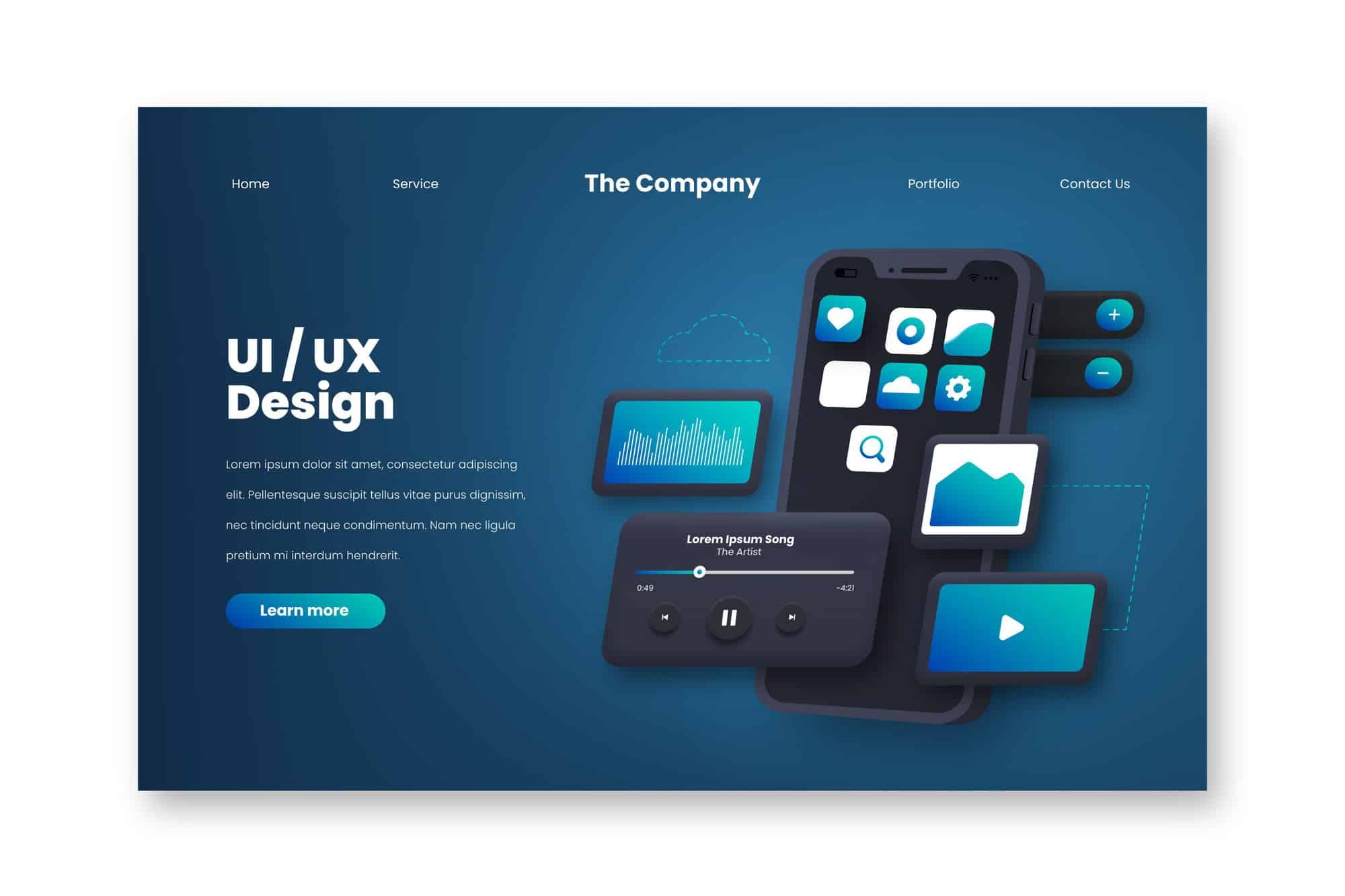Website Design for Mobile
In today’s mobile-first world, having a website that functions flawlessly on smartphones and tablets is no longer an option, it’s an absolute necessity. Here are the key points you need to know for successful mobile website design:
1. Responsive Design is Essential:
You’re absolutely right! Responsive design is essential for mobile in today’s digital landscape. Here are some key reasons why:
Mobile Dominance:
- Mobile browsing surpasses desktop: According to Statcounter: https://gs.statcounter.com/, over 55% of global web traffic now comes from mobile devices. This means the majority of users are accessing your website on their phones and tablets.
- Improved user experience: Responsive design ensures your website adapts to different screen sizes and resolutions, offering a seamless and user-friendly experience for all users, regardless of their device. A website that isn’t mobile-friendly can be difficult to navigate, slow to load, and ultimately lead to frustration and a high bounce rate (users leaving your website).
SEO and Search Visibility:
- Google prioritizes mobile-friendly sites: Since a significant portion of searches happen on mobile devices, Google prioritizes mobile-friendly websites in search engine results pages (SERPs). This means a responsive design can significantly improve your website’s ranking and visibility in mobile searches.
- Enhanced user engagement: A user-friendly mobile experience can lead to increased engagement, longer visit times, and potentially higher conversion rates on your website.
Accessibility and Inclusivity:
- Responsive design caters to diverse needs: It ensures your website is accessible to users with different disabilities and preferences, including those who rely on assistive technologies or have specific accessibility needs.
Overall, responsive design is no longer just optional, it’s crucial for the success of any website in the modern era.
Here are some additional benefits:
- Reduced maintenance: You only need to maintain one website instead of separate versions for desktop and mobile.
- Cost-effective: Responsive design can be a more cost-effective solution compared to developing and maintaining separate mobile apps or websites.
- Improved brand image: A consistent user experience across all devices projects a professional and modern brand image.
By incorporating responsive design, you can ensure your website reaches a wider audience, delivers an optimal user experience, and thrives in the mobile-centric world.
2. Prioritize Thumb-Friendly Navigation:
Prioritize Thumb-Friendly Navigation: User Experience on the Go
In today’s mobile-dominant world, prioritizing thumb-friendly navigation is no longer a suggestion, it’s a necessity. With the majority of web traffic originating from smartphones and tablets, websites need to cater to one-handed users efficiently. Here’s how to optimize your website’s navigation for thumbs:
1. Strategic Button Placement:
- Reachable Zone: Place essential buttons and interactive elements within the “thumb zone”, which is the area of the screen easily reachable by the thumb while holding the device in one hand. This generally falls within the lower half of the screen for most users.
- Avoid Top Corners: Reserve the top corners of the screen for less critical functions or elements that users don’t need to access frequently.
2. Sizing and Spacing:
- Adequate Size: Ensure buttons and clickable elements are large enough for comfortable tapping with a thumb. Avoid using overly small buttons that require precise targeting.
- Ample Spacing: Provide sufficient space between buttons and other clickable elements to prevent accidental taps, especially on smaller screens.
3. Navigation Menus:
- Hamburger Menu: Consider using a “hamburger menu” (three horizontal lines) for complex navigation options. This menu collapses into a compact icon, minimizing screen space while still providing access to essential features.
- Tab Bar: For simpler navigation with a limited number of options, a tab bar at the bottom of the screen can be a user-friendly choice.
4. Intuitive Gestures:
- Swipe Navigation: Implement intuitive swipe gestures for commonly used actions like switching between pages or dismissing elements. These gestures are natural thumb movements and enhance the user experience.
5. Responsive Design:
- Adaptability: Ensure your website layout and navigation adapt seamlessly to different screen sizes and device orientations. This ensures a consistent and comfortable experience across various mobile devices.

Additional Tips:
- Clear Labeling: Use clear and concise labels for buttons and navigation elements to avoid confusion.
- Visual Hierarchy: Employ visual cues like size, color, and contrast to guide users towards primary actions and important information.
- Testing and Refinement: Continuously test your website’s usability with real users on mobile devices to identify and address any navigation issues.
By implementing these strategies, you can create a thumb-friendly navigation experience that empowers your users to interact with your website effortlessly on the go. This not only improves user satisfaction but also contributes to increased engagement, conversion rates, and ultimately, the success of your website.
To read What exactly is digital marketing? Click on the link.
3. Optimize for Readability:
Use large, clear fonts that are easy to read on small screens. Break up text into short paragraphs with clear headings. Optimize images for smaller screens and prioritize lazy loading to avoid slow loading times.
4. Speed is King:
Mobile users are impatient. Ensure your website loads quickly by optimizing images, minifying code, and utilizing a reliable hosting provider. Every second counts!
5. Focus on Essential Content:
Users have limited attention spans on mobile. Prioritize your most important information and avoid cluttering the screen with unnecessary elements.
6. Make Calls to Action Clear and Actionable:
Use strong verbs and contrasting colors for your calls to action (CTAs) to make them stand out. Ensure they are easy to tap and lead users to the desired action smoothly.
7. Test, Iterate, and Refine:
Don’t just build it and forget it. Use mobile testing tools and gather user feedback to identify areas for improvement. Continuously iterate and refine your design based on real-world usage.
8. Consider Mobile-Specific Features:
Explore features like click-to-call buttons, location services, and offline functionality to enhance the mobile experience.
9. Don’t Neglect Accessibility:
Ensure your mobile website is accessible to users with disabilities by following WCAG guidelines. This includes proper color contrast, alternative text for images, and keyboard navigation capabilities.
10. Stay Up-to-Date:
Mobile technology and user expectations evolve rapidly. Stay informed about the latest trends and best practices to keep your mobile website current and effective.
Bonus Tip: Utilize tools like Google’s Mobile-Friendly Test to assess your website’s mobile readiness and identify areas for improvement.
By following these key points, you can ensure your website shines on all screens, delivering a positive and engaging experience for your mobile audience. Remember, a well-designed mobile website is no longer just a bonus, it’s a crucial foundation for success in today’s digital landscape.








